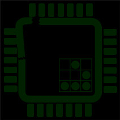The Fall UEFI Plugfest is happening, a week of interop testing with UEFI vendors, along with some presentations. The presentation abstracts are below, see the full itenary for speaker bios.
http://www.uefi.org/events/upcoming
http://www.uefi.org/sites/default/files/resources/Agenda%20and%20Session%20Abstracts%20-%20Final_Oct%2024%202017.pdf
“Last Mile” Barriers to Removing Legacy BIOS (Intel)
While UEFI has become a dominant standard since its introduction in 2005, many use cases still rely on compatibility with PC/AT Legacy BIOS. These legacy corner cases are a barrier to completing the transition to modern firmware standards. Intel has identified maintaining compatibility as an issue for platform security and validation costs, and plans to eliminate legacy BIOS elements in our 2020 data center platforms. This session discusses “last mile” gaps for 16-bit compatibility and identifies UEFI capabilities that the industry can promote as alternatives, including HTTPS Boot, OS Recovery, and Signed Capsule Update.
UEFI Firmware – Security Concerns and Best Practices (Phoenix)
(no Abstract)
Strategies for Stronger Software SMI Security in UEFI Firmware (Insyde)
Avoid design errors and software coding pitfalls when implementing SMI handlers. Device manufacturers customize UEFI firmware using new runtime interfaces that are implemented using software SMIs. Heavy customization, tight deadlines and poor code implementation can accidentally allow malware to abuse the power of SMM. This session focuses on four common software SMI vulnerabilities and how to change your UEFI firmware and applications to avoid them.
Advances of UEFI Technologies in ARM Systems (ARM)
This session will discuss the ARM-related interfaces defined in the latest UEFI and ACPI specifications, the requirements of the UEFI and ACPI interfaces for the SBBR Specification, and the use of UEFI SCT and FWTS in the SBBR compliance test. Also, discussed will be the required UEFI interfaces for the embedded space when the separation of the device and OS development is desired.
Introduction to the Self-Certification Test (SCT) in UEFI World (Canonical and Intel)
The UEFI Test Working Group (UTWG) endorses two test suites: Firmware Test Suite (FWTS) and the UEFI Self-Certification Test (SCT). FWTS is focused on validating Linux compatibility, and is endorsed by UTWG for ACPI validation. The UEFI SCT is designed to validate firmware and driver behavior per the UEFI Specification. This session demonstrates the operation of both tools, and discusses how they use open source models to improve test quality.
Firmware Test Suite Introduction: Uses, Development, Contribution and GPL (Canonical)
Firmware Test Suite (FWTS) is the recommended ACPI 6.1 Self-Certification Test (SCT). This command line tool is easy to use and provides explanatory and informative. Its open-source nature allows developers to add new tests easily, and many code examples such as ACPI, UEFI and SMBIOS are available for references. Code contribution are appreciated and technical discussion and code reviews on the mailing list are answered by an active community. As licensed by GPL, FWTS ensures it is available and suitable to everyone who wants to use it publicly and privately.
NFC and UEFI (AMI)
NFC is a technology that has permeated many aspects of everyday life. Using NFC, you can now pay with your phone or enter secure building areas. However, the UEFI specification lacks any implementation of NFC. AMI will cover a proposed solution for NFC implementation in UEFI, how to best fit NFC into the UEFI specification, and potential use cases.
Edk2 Platforms Overview (Linaro)
For a couple of years now, the Linaro OpenPlatformPkg repository has been used to collate a number of (at least partially) open source EDK2 platform ports. However, with a now properly defined process for the TianoCore edk2-platforms and edk2-non-osi repositories, these platforms are now moving over there and OpenPlatformPkg. This session will discuss the process, the current state of things and the practicalities of working with edk2-platforms.
UEFI Manageability and REST Services (HPE and Intel)
With the increase in platform firmware complexity and capabilities, there is an increased need to standard firmware manageability is increasing. The UEFI 2.7 Specification defines REST services to provide secure solutions for managing modern platforms. This session describes enterprise configuration scenarios, discusses implementation gaps in the UEFI specification, and proposes enhancements related to vendor-specific REST services.

You must be logged in to post a comment.